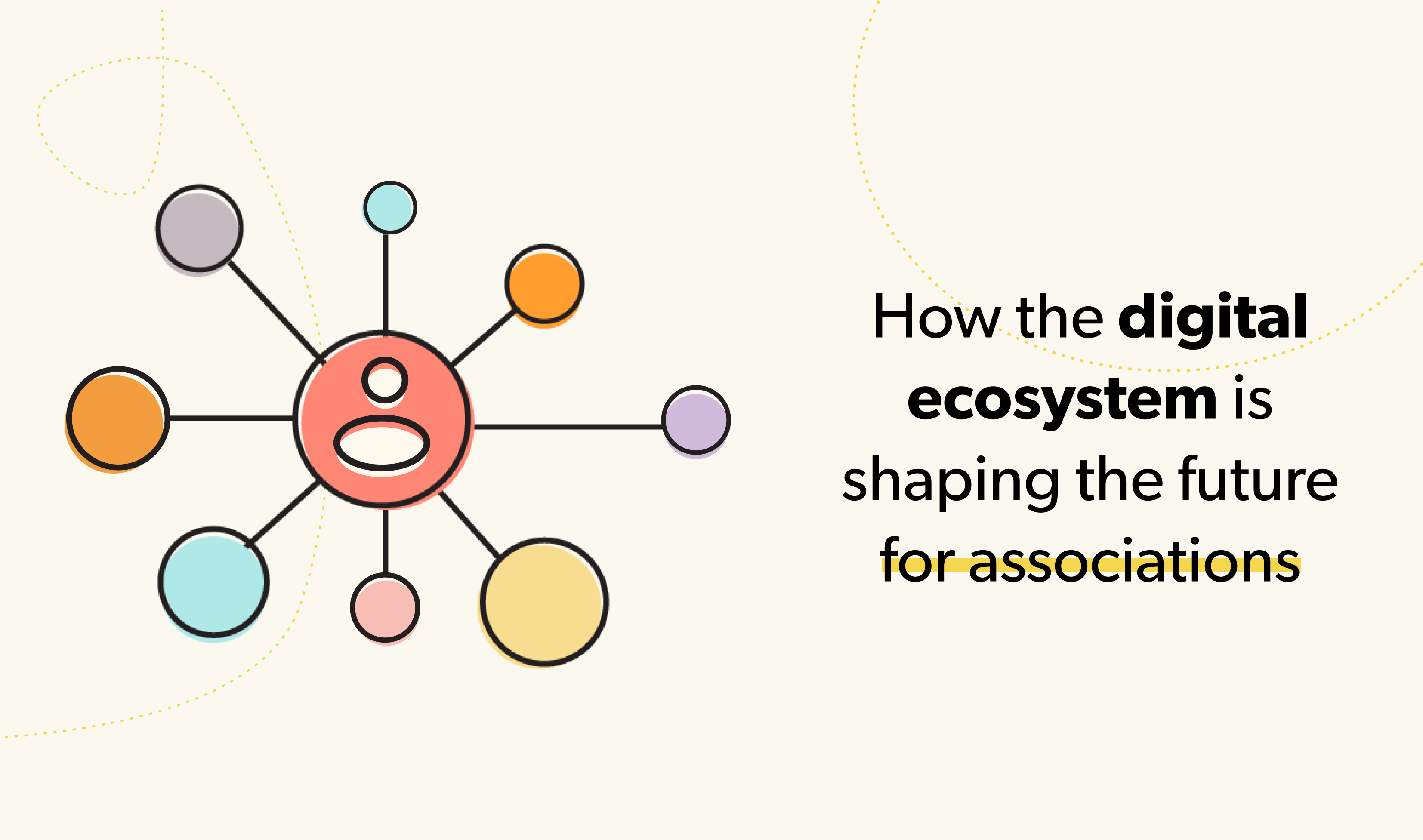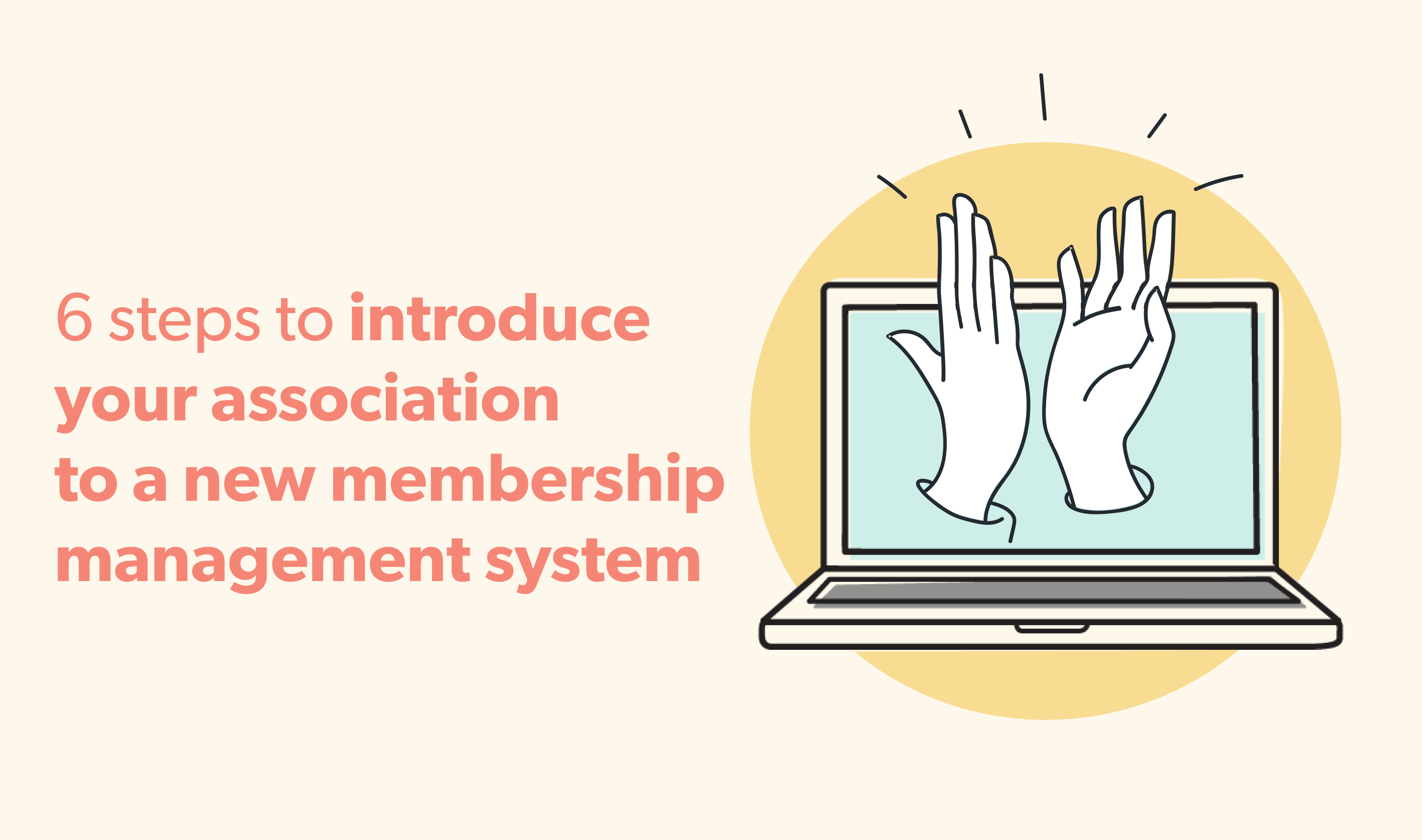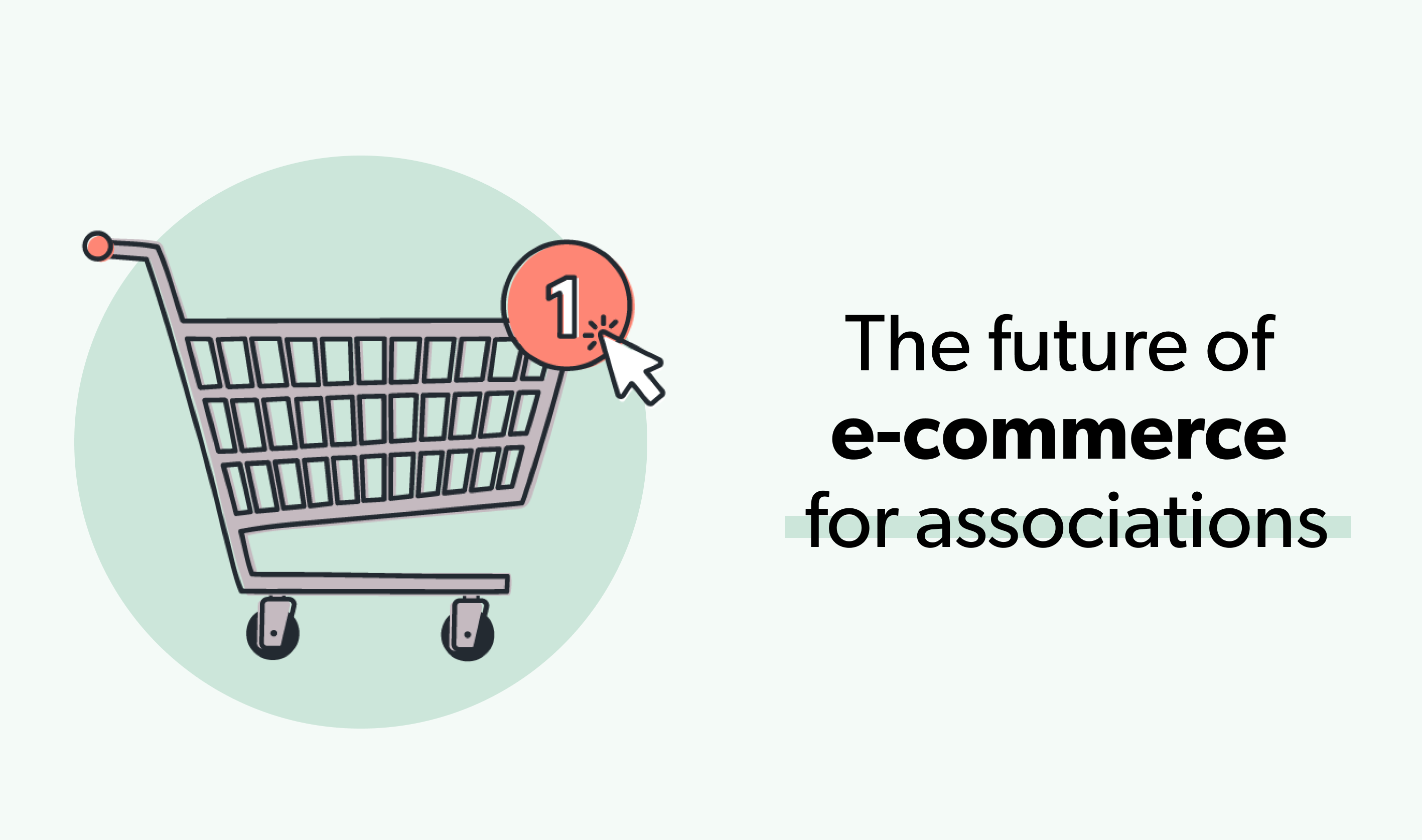How the digital ecosystem is shaping the future for associations

Managing an association member base isn’t an easy task, especially in today’s ever-evolving world. Meeting and exceeding members’ expectations will always be priority number one, so associations must constantly up their game to deliver exceptional member experiences.
To do this, you need to lean on best-in-class tools and technology, track member engagement in real-time, and leverage member data. From experience, you may already know a traditional Association Management Software (AMS) falls short in these areas.
The all-in-one model an AMS leans on often doesn’t improve productivity as it promises because the boxed-in modules can encourage data silos. Team members will opt to use other software in place of the modules because they simply do the job better. AMS’ aren’t equipped to connect with many of these tools, so your association is left with data silos, isolated repositories of data that do not interact with one another.
So, how can you evolve all your tools and integrate them to work effortlessly and create a centralized database? Embracing a digital ecosystem model is the way to go. And this often calls for a digital transformation.
So, what is a digital ecosystem model?
A digital ecosystem model allows your association’s everyday tech solutions to work together and communicate with one another. Consider the different types of software needed to perform various tasks, including membership renewals, event registration, conference management, e-commerce, website updates, and maintenance of members’ data and records, to name but a few.
When all the tools you use in your day-to-day operations connect, they form a digital ecosystem. This empowers you to maximize their functionality and add more value to your process and workflow management. A platform like Wicket can connect all these tools seamlessly and view their data all in one place.
Simply put, a digital ecosystem is a suite of cloud-based, Software as a Service (SaaS) products that meet the unique needs of your specific organization. It unifies the member data from these products and tools in a single source and provides flexibility so your teams can select the most effective tools to be successful in their membership management. With the freedom to choose and integrate best-in-class software tools across all areas of your association, you can deliver a holistic user experience to your valuable members.
Wicket’s Member Data Platform
The Wicket Member Data Platform (MDP) leads the charge to help associations adopt a digital ecosystem model. With Wicket, you can integrate all the third-party tools you currently use or wish to use into your association’s operations. Wicket becomes the system of record for your rich membership data and synchronizes it across all of the tools in your ecosystem. From there, it tracks and reports on every member touchpoint across the integrated third-party tools, capturing rich engagement data for your association.
What is the opposite of a digital ecosystem model?
Suppose your association hasn’t adopted the digital ecosystem approach yet. In that case, you’re most likely using a traditional Association Management Software (AMS), which takes the boxed-in, all-in-one approach to association management. While a digital ecosystem approach supports the idea of using various software to optimize tasks, the AMS tries to excel in many areas and do it alone using built-in modules. A jack of all trades and master of none, the AMS usually falls flat.
Why you should adopt a digital ecosystem model
If you ask the association industry’s top tech consultants why you should adopt a digital ecosystem, they’ll give you a laundry list of reasons. But you don’t need extensive research to convince you. Thanks to the disruption caused by the pandemic, you may have already witnessed the reasons first-hand.
While the pandemic fueled a digital transformation for some associations, most tech-savvy associations started preparing for a digital ecosystem future as early as 2010. But the reasons for adopting a digital ecosystem model pre-pandemic, during the pandemic, or post-pandemic remain the same. In any case, the pandemic has only proved them right. These are:
Flexibility and choice
If one software or platform could effectively handle all your association’s evolving needs, you would buy that software and get on with your daily operations. But the world of AMS has shown us that no software can single-handedly manage the growing needs of modern-day associations. While associations have a lot of similarities, each has its own intricacies and complexities in processes.
You’ll need the best-in-class website content management system (CMS), business intelligence tools, e-commerce system, community engagement platform, event management platform, learning management system, and email marketing platform. You may even need more specialized tools if you assign members in different membership segments with tailored content.
This is why you need the flexibility and freedom to select the leading technology and software solutions best suited for your association. To satisfy your members’ current and future needs, you need to have enough elbow room to leverage the fit-for-purpose third-party tools. Imagine if you had to do email marketing to a growing membership base using an AMS instead of an industry-leading tool like Mailchimp. You would instantly fall behind in your member communications and struggle to catch up.
A digital ecosystem model gives you the flexibility and latitude to integrate the best available third-party tools and technology to make association management simpler and more effective. In turn, you experience increased member engagement and satisfaction in the short and long term.
Cloud-based platforms
It’s estimated the global public cloud-computing market will reach about $482 billion in 2022. This tells us that more companies worldwide are maximizing cloud computing. Thankfully, adopting a digital ecosystem approach in your association allows you to benefit from cloud computing because the platforms are cloud-based.
One of the main benefits you’ll enjoy is the accessibility, mobility, and flexibility of cloud-based platforms, primarily if some or all your employees work remotely. Additionally, cloud-based platforms attract cost savings in the long term. You’ll save on data storage costs, and your team will use less time to complete and automate workflows.
In addition, it’s easier and faster to execute regular system updates on cloud-based platforms to upgrade security and keep your member data secure. A digital ecosystem makes cloud computing more beneficial to your association’s overall management.
Supports growth and innovation
As your association grows and attracts more members, your processes and workflows will evolve. When using an AMS, your options to innovate and accommodate growth are limited within the built-in modules.
Conversely, a digital ecosystem allows you to scale your software capacity as your organization’s needs expand. This way, if your email list grows rapidly in a short span, you can upgrade your email platform’s capacity in tandem.
With a digital ecosystem, you’ll not be limited by one platform’s features since you can add new integrations to match your evolving needs.
Synchronized data through integrations
A digital ecosystem allows you to use a Member Data Platform like Wicket that synchronizes member data through integrations. For example, if your association uses a community engagement integration such as Higher Logic or Tradewing, your admins would be able to view data from these tools in Wicket.
Unified user experience
Such integrations also help unify your member experience using Single Sign-On (SSO), allowing users to log in to different software using the same login credentials. Association members expect a seamless user experience and journey when interacting with your website so SSO plays a big role in making this possible.
Less likelihood of data silos
In a digital ecosystem, integrated software tools can connect and share data reciprocally on a Member Data Platform like Wicket. It’s possible because an MDP acts as a single source of truth where all the member data is stored. Your team can easily find and integrate new solutions with an MDP without creating information silos across multiple software.
Further, an MDP records and syncs data changes in real-time as users make modifications. For instance, if members adjust their profile information on the website integration or the community engagement platform, the MDP updates the changes in the centralized database. As a result, you can track and understand member engagement more accurately and effortlessly.
How to build a digital ecosystem
Building a digital ecosystem for your association isn’t a one-day job. It’s an ongoing process that evolves as your association’s needs change. Hence, you must build one customized for your current needs and flexible enough to adapt to your future needs. Admittedly, this can be an uphill task to fulfill on your own, so it’s wise to consult a seasoned tech consultant in your field for expert recommendations.
Let Wicket guide you
Building a complete digital ecosystem specific to your association can feel daunting, particularly if your association is small staffed. While you want the software that satisfies your association’s needs entirely, it may feel overwhelming to pick the best of the bunch when you have several best-in-class software tools at your disposal. Also, it’s unfeasible to try all the tools available as a trial-and-error strategy before settling on one.
That’s why you need a knowledgeable partner like Wicket to help you select the best-suited software tools for your association. Our team has worked on integrations for several best-of-breed software tools. We know them well and can make recommendations based on your association’s unique needs.
Reach out to Wicket to discuss how a digital ecosystem approach can work within your association so you aren’t left behind with an outdated, boxed-in system.



